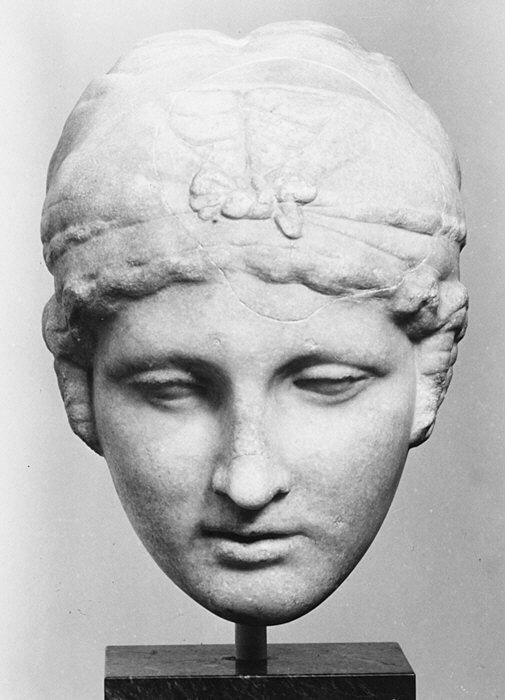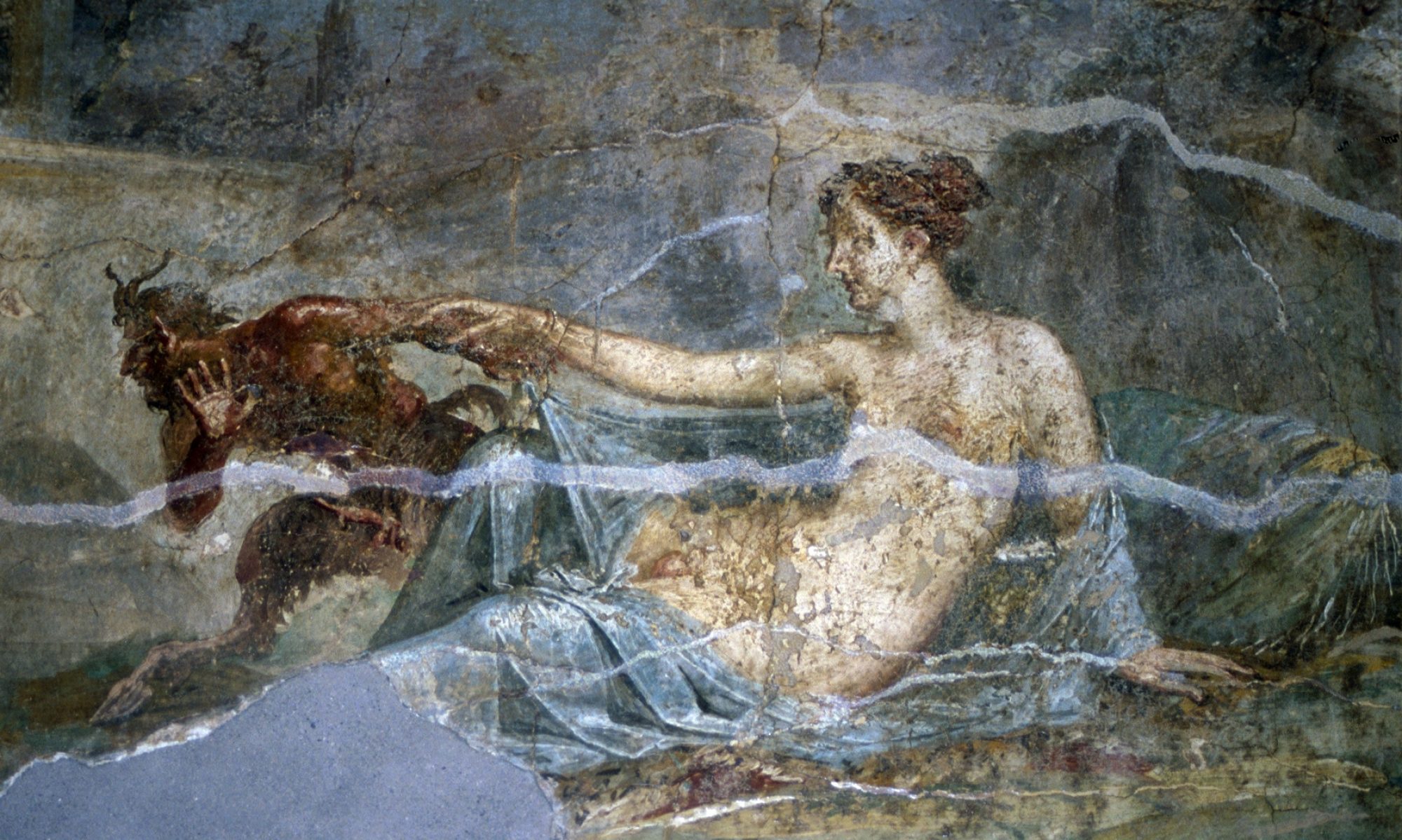
This unit ‘hooks’ on to the last through the symposium as one venue for the performance of lyric poetry. Lyric poetry–from which we get the common English word lyrics, as in song lyrics–means at its simplest level poetry song to the accompaniment of the lyre. The lyre is illustrated in the vase painting above, key features of this instrument is the tortoise shell sound box, two horns that serve as the frame, seven strings, and a top cross bar with pegs for tuning the strings. It was typically played with a plectum or lyre key (think guitar pick). There are a number of other similar stringed instruments from antiquity also in what is some times called the yoke lute family of stringed instruments (e.g. kithara).
The genre of lyric poetry typically expresses personal emotions and is song in the first person, may different meters are known.

Sappho is perhaps the most famous and most influential lyric poet of all time. We know somethings about her as really living breathing historical person, or at least think we do. However, in many ways the most important feature of Sappho is how she has been remembered. She has been turned into a legend and symbol. Her influence on later poetry is beyond question. Our very word lesbian is derived from her reputation as a female lover of other women from the island of Lesbos. Earlier on the English has used the word sapphic instead to mean a female homosexual.
We will begin by reading about Sappho and some of her surviving work through the modern poet, scholar, and translator, Anne Carson, a modern literary giant. The introduction is secondary literature, are the notes at the end. The quotes providing ancient testimony with regard Sappho are primary evidence, as are the poems themselves.
Next we will read and annotated two modern essays (also classified as secondary literature, even if not peer reviewed, certainly written by experts) on the experience of reading and thinking about Sappho today.
Haselwerdt’s “Re-Queering Sappho”
Mendelsohn’s “Girl, Interrupted: Who was Sappho”
Further Images for Consideration
Pots where Sappho is identified by an inscription











